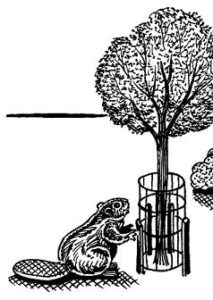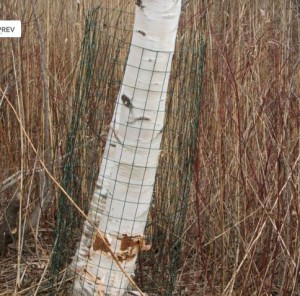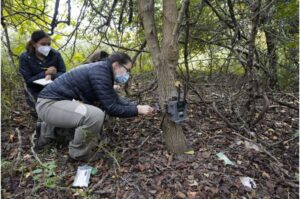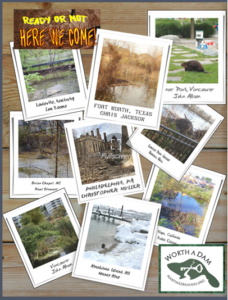Do you remember that beaver from a while ago Patti wrote about with no tail? Well she has learned more about them and its worth sharing.
Patti Smith | View from Heifer Hill: Beaver chronicles, part two
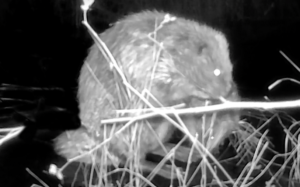 This month, I take you, once again, to my wild brook for the next installment of the beaver chronicles. To recap: counter to all expectations, in this large, vacant watershed, two half-sisters have moved in next door to each other. Ten-year-old Dew has a kit or two from the spring. Four-year-old Gentian is living on her own, or is she? Also residing on this stretch of stream is a large, stealthy fellow who is missing that most iconic beaver appendage, his tail. Is he the father of Dew’s kits? Does he also have a relationship with Gentian?
This month, I take you, once again, to my wild brook for the next installment of the beaver chronicles. To recap: counter to all expectations, in this large, vacant watershed, two half-sisters have moved in next door to each other. Ten-year-old Dew has a kit or two from the spring. Four-year-old Gentian is living on her own, or is she? Also residing on this stretch of stream is a large, stealthy fellow who is missing that most iconic beaver appendage, his tail. Is he the father of Dew’s kits? Does he also have a relationship with Gentian?
When I introduced this male last month, I had only had a few glimpses of him. The trauma that took his tail left him a very cautious beast. This month, I had reason to hope for better data; West Coast beaver friends had visited and left me with trail cams. I positioned one by each of the lodges under construction in the complex. The cameras have created a record of a most mercurial month, literally and figuratively. Certain facts have been revealed. Mysteries remain.
My friend Suzanne Husky came up with a name for the abbreviated male. I knew she would; she is a collector of beaver place names and mythology, especially in her native France. She is engaged there in reconnecting people with their beavery past and, she hopes, their beavery future. She proposed Bebryx (Proto-Celtic ‘beaver’) after a king from Greek mythology.
The cameras have captured Here’ often, always upstream at Dew’s lodge. One evening, the camera showed him dining and grooming on a shelf of ice streamside. One of the kits swam over, climbed up next to him, and began to groom him. It’s confirmed. He’s the papa. When he got up and dove into the water, I got a good look at the place where his tail should have been. A beaver’s backside tapers in a muscular wedge. The flat, leathery tail attaches at ground level. All that remained of this fellow’s tail was the furry part gathered into a scar at the site of the injury.
Nice job Suzanne, And nice job mystery beaver! I never even knew about that name! Here;’s what wikipedia has to say about it, “ultimately stemming from Proto-Celtic*brebu (‘beaver’; see Gaulishbebros, bebrus, Old IrishBibar, ‘beaver’).[2][5]Ivan Duridanov also suggested that the ethnonym was related to Indo-European words meaning “beaver”. I guess if you have no tail you deserve a really special name.
On Nov. 15, an early freeze-up began with a snowstorm. By that point, the beavers had finished the structural work on their lodges and were moving on to plastering. A camera recorded Bebryx working from midnight until 2 a.m. He triggered the camera each time he clambered from the stream with an armload of mud. He would then rear up to balance on his hind legs and stagger upward; the load pressed between his chin and chest. The beaver’s lurching progress up the side of the lodge would not earn style points in the competition, but beavers are adapted for grace in the water. That they also manage bipedal locomotion while carrying a load of roofing materials is quite a feat.
Bebryx made 13 trips that night. The first nine loads were delivered in rapid succession. He then took a lunch break, followed by a more leisurely second shift. Dew began her shift at 2 a.m., delivering eight loads over the course of two hours. All the while, the snow came down, and ice crystals snapped together.
You don’t think a little thing like having no tail is going to stop me from working do you? Of course not. I’m a beaver. Not a quitter.
Snow and ice reigned through mid-November. Then came the thaw and rains. One night, I was greeted at the brook by a sweet fog of castoreum. This beaver perfume is among the information-rich secretions that beavers use to communicate. Sometimes the message is “come-hither.” More often, it is “this place is taken.” These beavers had not been actively scent marking since the spring. Before I had time to look for the source, Dew swam up. Blood trickled from a wound above her eye. A large gash had been torn on her hip, and a couple of chunks had been nipped from her hide. I had just missed a beaver battle. Someone had reported seeing beaver tracks crossing a ridge trail into this drainage a few days earlier. Trail cameras showed Gentian continuing her work, oblivious, so it seems the interloper was forced to flee upstream. This is not a good season for a beaver to be on the move. Winter survival depends upon having a lodge and an underwater supply of food before freeze-up. I hope the poor vagrant is situated now.
On a few occasions, the trail cams have recorded the local mink making his rounds. Voles have been captured emerging from chinks in the roof of Gentian’s lodge. One night recently, two pointy ears loomed in front of the camera by Dew’s lodge. The next video showed Dew on the lodge, sniffing nervously. Minutes later, the owner of the ears stepped into the frame — a bobcat. I could only watch in horror as the cat lowered into a stalk and crept toward the sound of a beaver chewing offscreen. The adults and one kit have been observed since. Am I cruel to hope the bobcat left hungry?
I am writing this, pondside, on a night in early December. The light of a half-moon has found its way through high, thin clouds. The temperature is dropping. In a new development, Bebryx is allowing himself to be seen. He is floating nearby, chewing on a branch, perfectly relaxed. Dew’s wounds are healing, but she is on edge. I wonder if the bobcat has been back.
When I stopped to check the camera by Gentian’s lodge, she swam over to the shore and then off to her food cache. Who is that second beaver who shows up in the shadows of her beaver cam?
By the time I write my next column, winter will be here in earnest. The beavers will be sealed into their wintry world, safe from predators. I hope it will be a cozy, companionable season and that they will have plenty to eat. I hope the same for you.
Ohh Patti. Your writing is so sweet and entirely human. I could follow you to the ends of the earth. You are the mother Theresa of beavers. Without all the complicated parts of course. Anyway yes, we are cozy and have enough food, thank you. And god bless us ever one!


